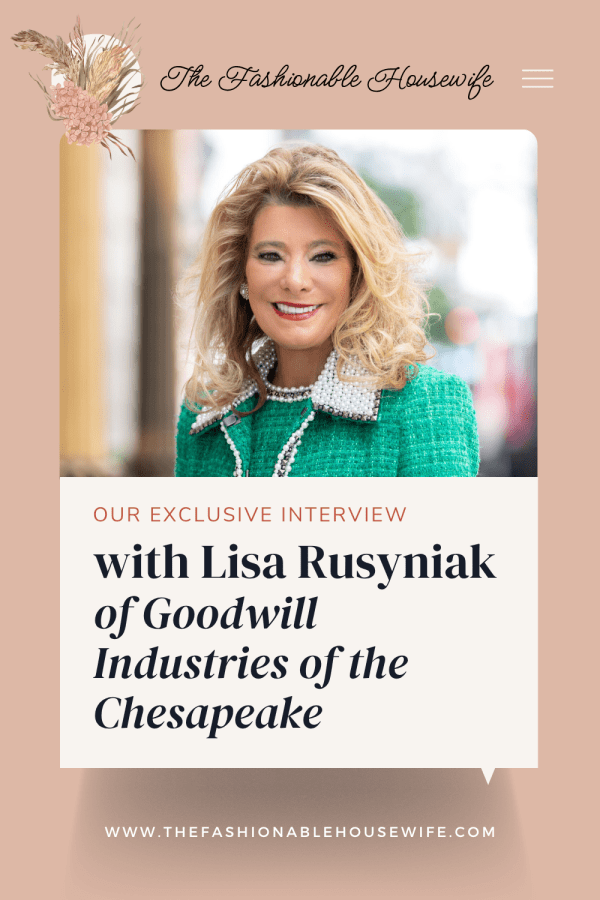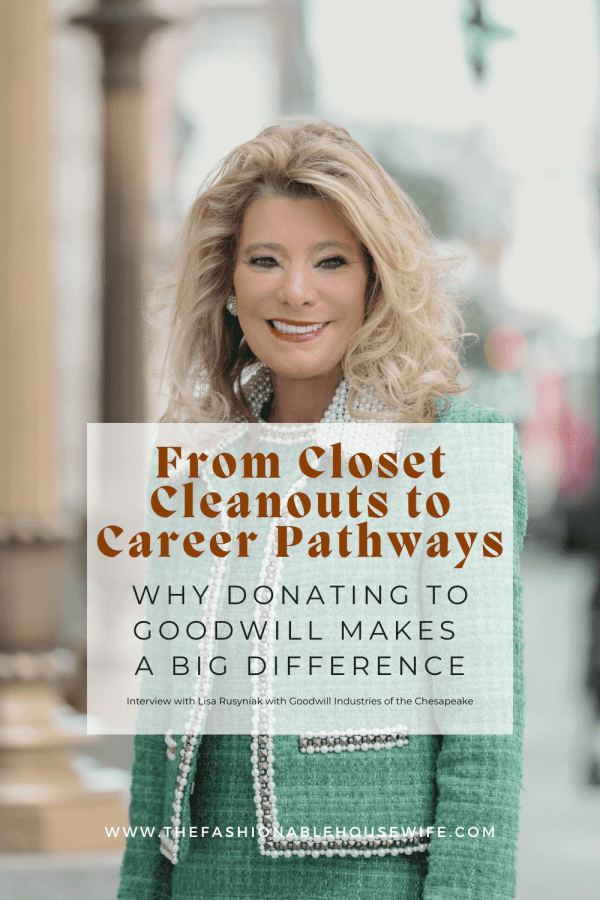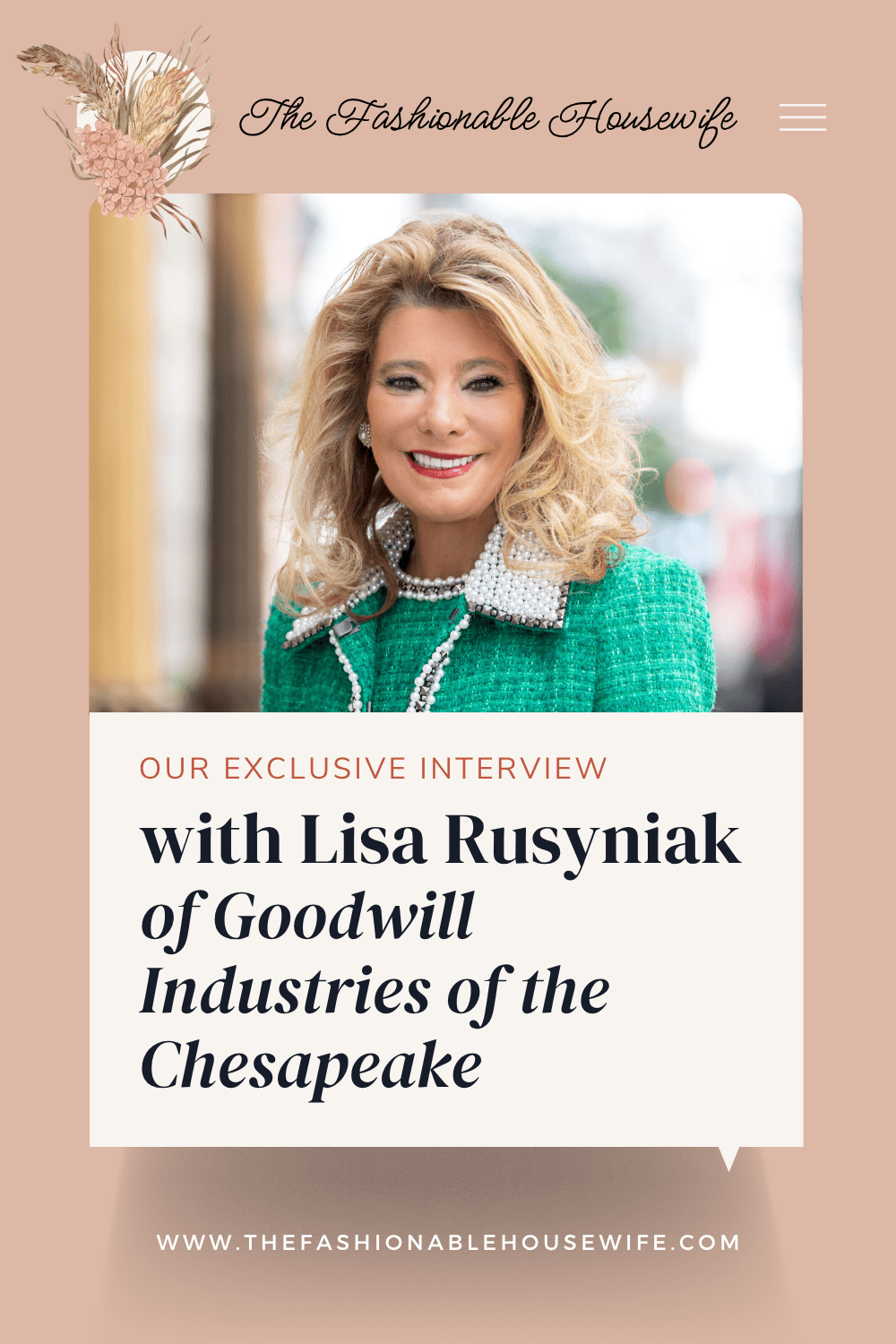From Closet Cleanouts to Career Pathways: Why Donating to Goodwill Makes a Big Difference

In today’s fast-paced world of fast fashion and overnight delivery, it’s easy to forget that the most sustainable choice might already be hanging on a thrift store rack. We sat down with Lisa Rusyniak, President and CEO of Goodwill Industries of the Chesapeake, to talk about how thrifting is more than just a trend—it’s a powerful tool for sustainability, community empowerment, and economic opportunity.
With decades of experience leading a mission-driven organization that transforms lives through the power of work, Lisa offers an inspiring look at how every donation and every secondhand purchase can help build a better future for both people and the planet.
Q: Why is thrifting one of the most powerful tools for sustainability?
As someone who’s spent my career championing both people and planet, I truly believe thrifting stands at the nexus of environmental responsibility and community empowerment. Every item you rescue from a thrift store shelf—whether it’s a gently worn sweater or a vintage lamp—represents one less new product manufactured, shipped, and ultimately discarded. The fashion industry alone generates more greenhouse gas emissions than international aviation and shipping combined; by choosing secondhand, we directly reduce demand for resource-intensive production processes, lessen water consumption, and diminish landfill waste. Beyond the clear ecological benefits, thrifting also preserves the stories embedded in each garment or household item, fostering a culture of mindful consumption. At Goodwill, every purchase you make in our stores goes right back into funding our employment and training programs, so sustainability here isn’t just about the planet—it’s about people rebuilding their lives.
Q: Why should people always check thrift stores before buying new?
Before you click “add to cart” on something brand-new, I encourage you to take a moment and explore your local thrift store. You’ll often find high-quality, gently used items—sometimes even unworn—with a fraction of the price tag. Checking thrift first is an intentional act: it slows down impulsive shopping, sharpens your eye for quality over brand-name hype, and reduces your carbon footprint. Moreover, it opens up a treasure hunt experience; you might discover unique pieces that express your personal style far more authentically than mass-produced items. In my view, every purchase should be a vote: buying secondhand casts a vote for conservation, community, and creativity. And because our stores are stocked by generous donors, your thrift-first habit is also a way to honor the circular economy—extending the life of goods and keeping them in circulation rather than letting them end up in a landfill.
Q: Why is donating to Goodwill so important?
When you donate to Goodwill, you’re doing so much more than clearing clutter from your home—you’re investing in life-changing opportunities for individuals facing barriers to employment. Every coat, book, or kitchen appliance you give becomes revenue for job training, career counseling, and placement services that help people gain financial independence and self-confidence. Donations fuel our mission: last year alone, Goodwill Industries of the Chesapeake provided services to over 5,000 people and placed over 1,000 people into jobs across Central Maryland and the Eastern Shore. Even if an item doesn’t sell, it might be recycled or repurposed, ensuring minimal waste. And because we price items affordably, donors are directly supporting families who rely on thrift for budget-friendly shopping. In essence, every donation is a double win—you make space in your home and create pathways to employment and stability for your neighbors.
Q: How Goodwill is helping people get careers?
At Goodwill Industries of the Chesapeake, we view a job as a platform for dignity, independence, and growth. Our career services go well beyond résumé writing. We offer customized training programs in fields like healthcare, logistics, and IT, and we partner with local employers to create pipelines for on-the-job learning and placement. For example, our recent partnership with a regional healthcare network trained over 200 individuals as certified nursing assistants, with more than 80% securing positions upon graduation. We also provide wraparound support—transportation assistance, childcare referrals, and financial coaching—so that barriers outside the workplace don’t derail someone’s progress. Ultimately, our goal is to match each person’s unique strengths and aspirations with real employment opportunities, paving the way not just for a first job, but for a career trajectory that can transform a life.

Donating to Goodwill Makes a Big Difference
Lisa Rusyniak reminds us that sustainability isn’t just about saving the environment—it’s about investing in people. Whether you’re donating a box of gently used clothes, picking up your next outfit at a local Goodwill, or supporting workforce development programs, you’re playing a vital role in a circular economy that values dignity, opportunity, and care. The next time you’re tempted to shop new, remember: real impact often starts with secondhand choices. After all, one small act—like shopping or donating at Goodwill—can create a ripple effect of positive change.

